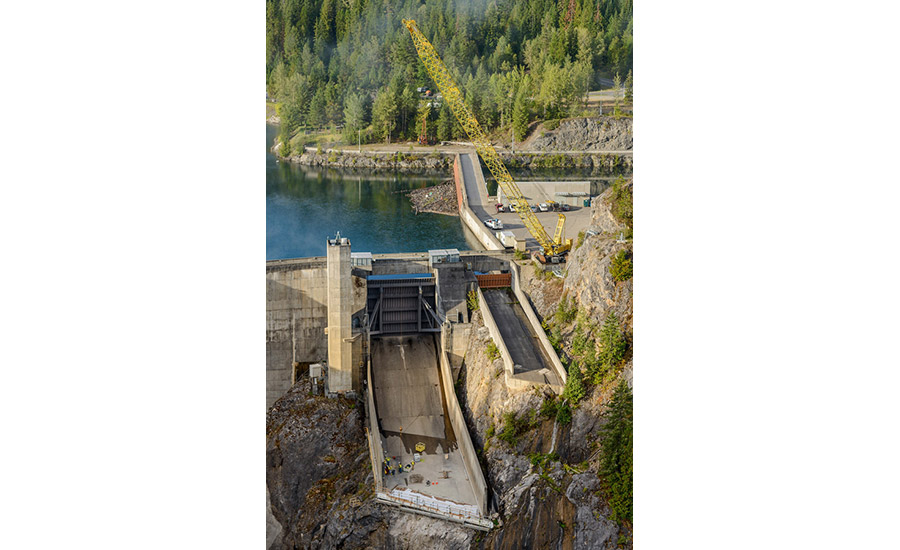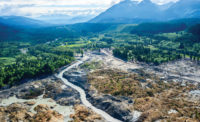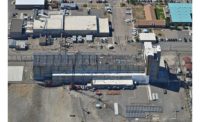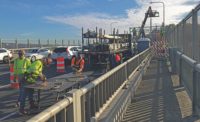Boundary Dam Spillway No. 1 TDG Modifications Removal
Metaline Falls, Wash.
Best Small Project
Submitted By: IMCO General Construction
Owner: Seattle City Light
Lead Design Firm/Civil/Structural Engineer: Hatch Associates Consultants Inc.
General Contractor: IMCO General Construction
Subcontractors: Proline Concrete; Sunset Co.; Post Tensioning Solutions
Boundary Dam is located in remote northeastern Washington and is one of the largest underground power generation dams in the nation, providing nearly half of the power generated by Seattle City Light (SCL). The structure features unique spillways cut into rock that are oriented so that water discharges from both sides, meeting in midair to dissipate the falling-water energy that would otherwise erode canyon walls.
The project goal was to mitigate impacts to local fish populations and minimize environmental impacts by removing total dissolved gas (TDG) modifications made in 2016 and to restore the spillway. Stainless steel roughness elements increased TDG in the river prior to this project, adversely impacting the fish population. These roughness elements also raised structural concerns when struck by debris.
The project team removed concrete and roughness elements by hand with demolition equipment such as jackhammers and rivet busters and used a technique called arc gouging to cut out ¾-in. stainless steel elements.
The location and work area posed significant risks that were mitigated through teamwork and proactive planning and collaboration. Crews worked 275 ft above the river on a sloped spillway, only accessible by foot or helicopter. All materials were hoisted by crane 95 ft above the jobsite. The staging area for the crane, materials, and equipment was a parking lot connected to an access road. Extensive planning and communication was required to keep the road open and prevent overhead hazards from the crane hoisting materials to the worksite.
During mobilization, the 200-ton crane was delivered in 10 separate loads and required the entire staging area to assemble 240 ft of boom. The team communicated daily regarding delivery, assembly durations and access restrictions. The team’s proactive collaboration allowed critical work in a tight area to be achieved seamlessly.
The spillway worksite was also challenging as it posed significant environmental concerns. Any leaks, spills or drops had a direct drainage path into the river. To mitigate risks, engineering controls included standard inlet protections, secondary containment on equipment and fluid containers and wattles in parking areas.





Post a comment to this article
Report Abusive Comment